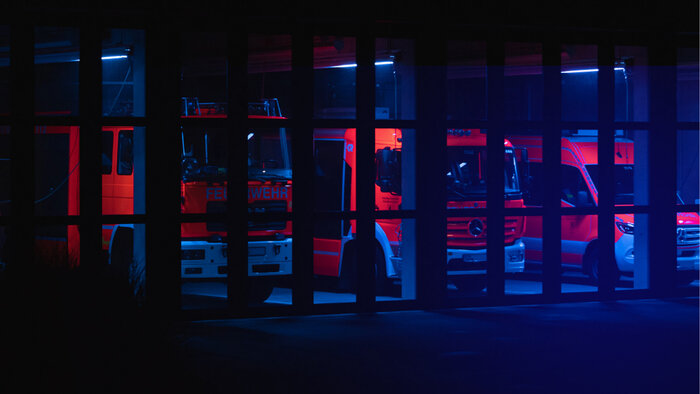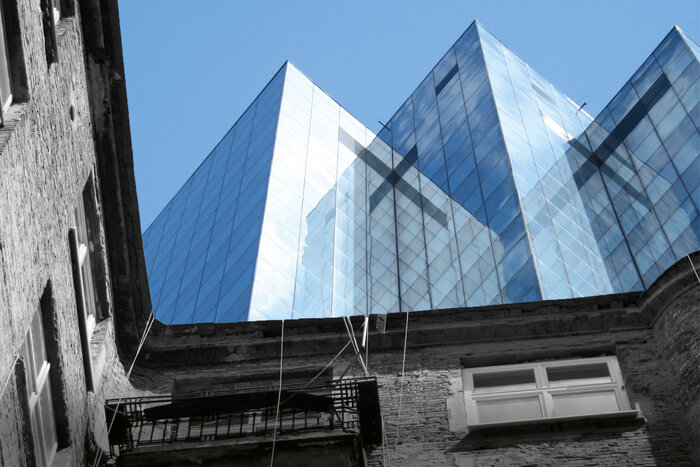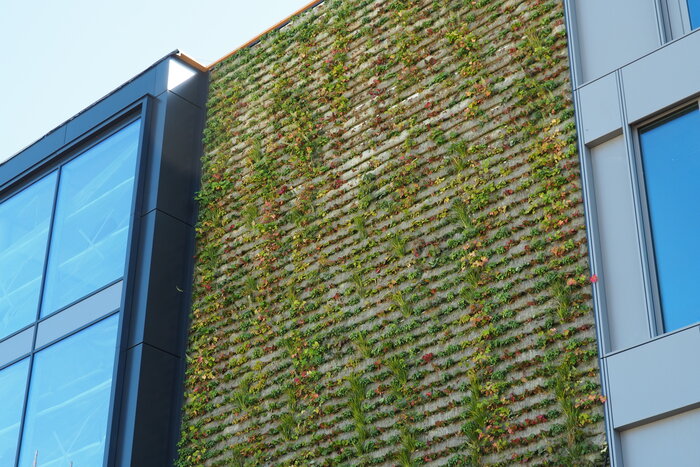Green roofs
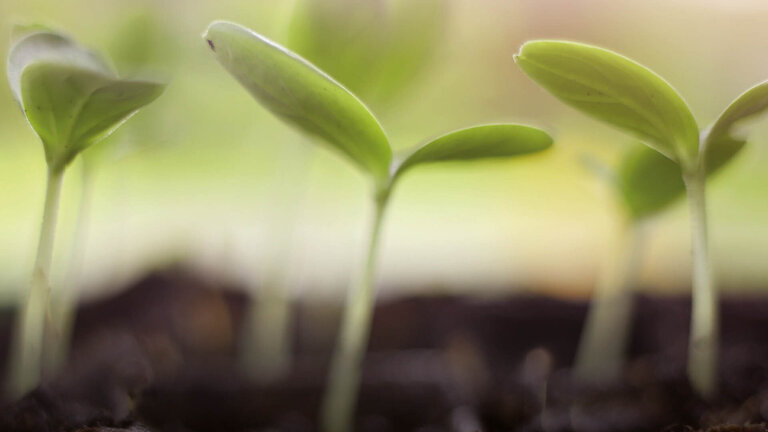
As we all know, you come across all sorts of astonishing things on the Internet – and here is a good example: In the middle of the Belgian port city of Antwerp there is apparently a house with a rooster that crows from the rooftop every morning. The roof has a rather unusual feature for a city of this size – a picturesque farm with all the idyllic features you could imagine. Free-range geese wander around between bleating sheep. And the whole scene is framed by rustic fences and luxuriant blossoming shrubbery. In short, it’s a wildly romantic cottage garden.
Although the whole thing seems entirely out of place, it is part of a growing trend. If you take a bird’s eye view of cities and urban centers, you see more and more areas of lush green, even far away from the large parks. It almost seems that if you are going to talk about the roofs of a city these days, you have to talk about plants and gardens. And what is striking is that, increasingly, the green roofs are being established in such a way that they are not simply passive compensation areas, but can be actively used by people.

We talked with Valentin Brenner, architect and expert for sustainable buildings from the architectural firm H. Brenner and long-time head of the Drees & Sommer Cradle to Cradle® expert team about green roofs in urban areas.
Mr Brenner, what has brought about the current boom in green roofs?
Valentin Brenner: The idea of doing something useful on a roof is not new. Particularly where space is at a premium – as in cities. Today, the roofs of large buildings are mostly used to ensure the supply of basic services and resources. They are the location for building services equipment such as air-conditioning units and solar panels. Or huge water tanks, like those that are typical for New York City.
But does that mean less space for the users or inhabitants of the buildings?
That depends. Of course, people are already using the roofs – if they have access and the appropriate facilities. In high-density urban areas, people yearn to get up on the roof, for example to use sports facilities or recreation areas, or visit trendy bars for a sundowner. All of these things have been installed on roofs. Not everywhere, but there is clearly a strong demand.
Let's talk about green roofs in the narrower sense. Say, for example, the principal wants to put one on a company building. Can they simply choose their favorite plants and start planting?
It’s not as easy as that. Essentially, green or planted roofs are another way of making practical use of every corner of a building. Some local authorities and federal states already have building regulations prescribing them for new construction projects. And, of course, the principals have to take a whole range of factors into account, such as the statics of the building. And you have design choices: The spectrum ranges from extensive vegetation on roofs with hardy plants growing on just a few centimeters of substrate to intensive green roofs that can be transformed into regular parks with paths, seats and solar pergolas – and even areas that can be used for agriculture.
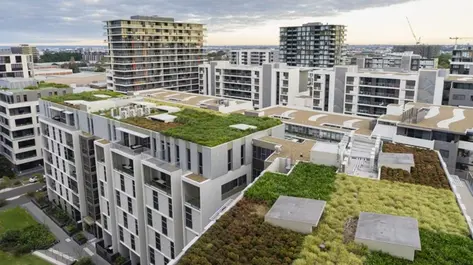
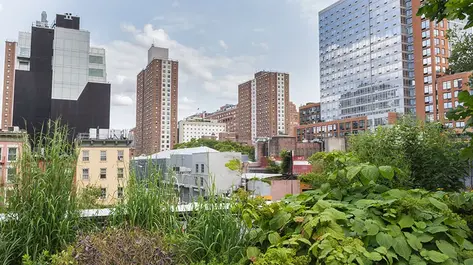
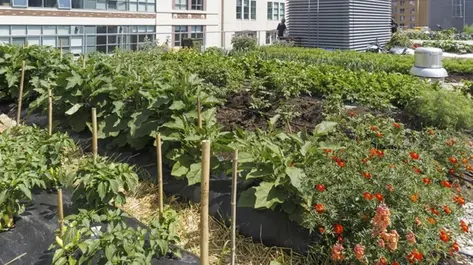
Agriculture in the city has been around since the urban gardening movement started at the very least. But on a roof? That sounds a bit like a retreat for ‘ecohipsters’!
On the contrary, urban gardening is just beginning to advance beyond its niche status. More and more experts are sure that this is the future. The reason is that it brings us closer to a solution to another urban problem: supplying inhabitants with food that is sustainably produced locally – possibly as part of a nutrient cycle. In addition to urban gardening and urban farming, the keywords are often hydroponics and aquaponics.
Aquaponics – that involves fish, doesn’t it? Does that mean there we will soon get fresh fish from the roof?
Exactly. Aquaponics is based on a symbiotic cycle that can easily be implemented in a limited space: Fish faeces fertilize vegetables which filter the water via their substrate. The water then flows back into the fish tank. And the fish and vegetables are available as food products. Trials are already underway to use waste heat generated by the operation of a building to drive such cycles.
It seems that – regardless of all the differences in form and function – planted roofs have one thing in common: They are compensation areas in many different ways. Would you agree?
Absolutely. This is most evident with regard to their ecological function: They provide balance where the urban space undergoes local heating as the result of solar energy stored in stone, steel, asphalt and concrete. Green roofs mitigate the heat island effect, which is usually a negative feature of cities compared to the areas surrounding them. Green roofs lower the temperature of the surroundings – and, thanks to the insulating properties of the plant layer and evaporative cooling, they also moderate temperatures in the rooms below.
It is also said that green roofs lessen the impact of heavy rain events. Can you explain how?
In Germany, around 45 percent of built-up areas and traffic surfaces are sealed. This can quickly become a problem, particularly during very heavy rain, because within a short time huge quantities of water flood into the sewer system – which is not usually not designed for such large volumes. Green roofs act in much the same way as natural soil, temporarily retaining rainwater, which can otherwise quickly lead to manhole covers being swept away. This takes some of the burden off sewer systems – and also results in lower wastewater rates for property owners. And it means that pedestrians can walk around the city without getting wet feet.
Which brings us to the cost. Does investment in green pay off?
A number of advantages of green roofs more than balance out the greater expenditure incurred by the principal for more complex planning & construction and regular maintenance. In addition to the reduction in local authority rates I mentioned before, these include lower costs for air conditioning and heating of the top floor. Added to which, employees generally identify to a greater extent with their ‘green’ building, not least because of the feel-good climate. If this has a positive impact on productivity and health, the investment quickly pays for itself. And ideally, the enhanced image of the property also results in optimized market presence.
One gets the impression that, in addition to the aspects of green roofs mentioned above, they also function as areas that compensate socially, particularly when they can be used actively. While down in the street life gets more and more hectic, up on the roof between boxwood shrubs and lavender, one can celebrate relaxation. And while – in the context of digitization – workspaces and smart homes are constantly talking about dematerialization, up on the roof, planting and harvesting are tangible. After all, the turnip has to be dug out and scrubbed before it lands on a plate. And roof gardens appeal to all the senses: You can see, hear, smell, taste and feel them. Reality, with no augmentation required! Even our smartphones can keep up with that (yet)!
This active compensation effect (ecological, economic and social) may indicate the real reason for the boom in green roofs: They are places where people can jointly try out future designs that combine utopian visions with creative ideas and technical innovations. And it could be that this will all combine to form a substrate in which the seedling of progress will take root and flourish.
